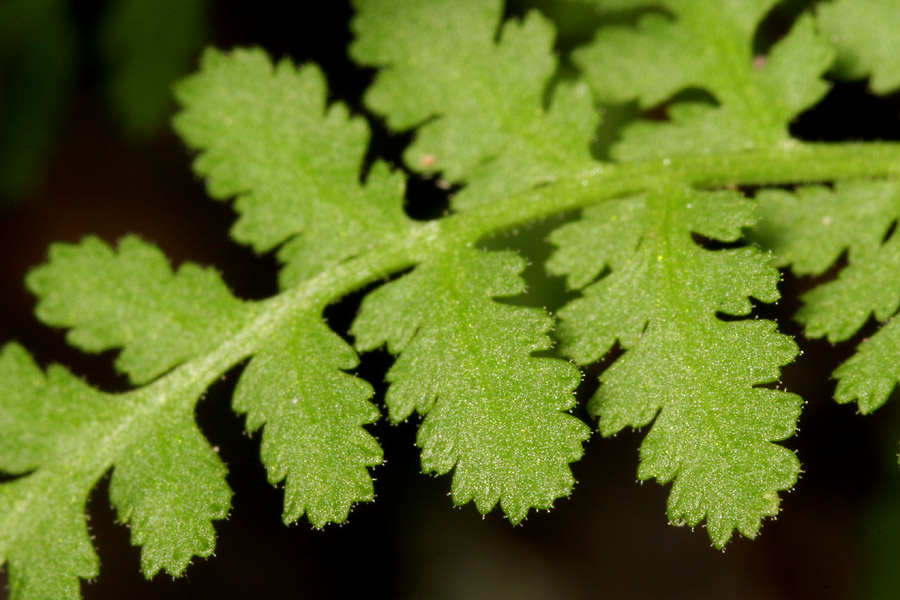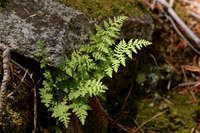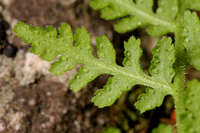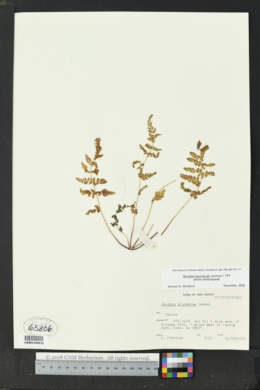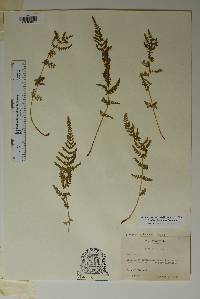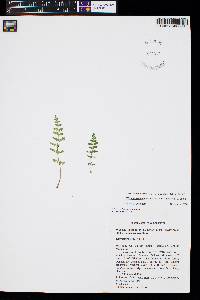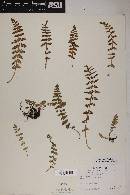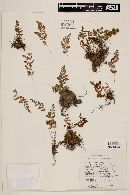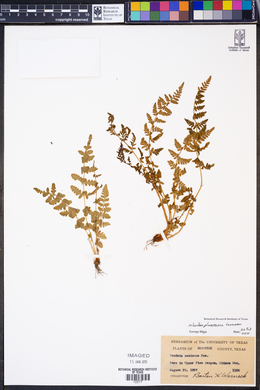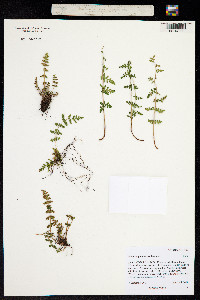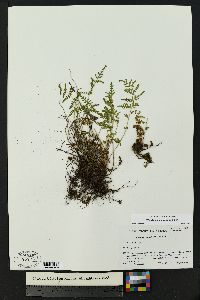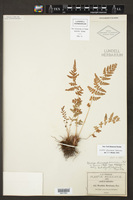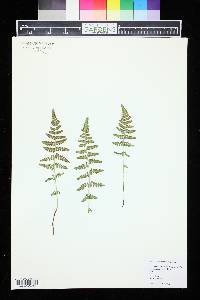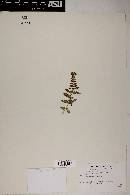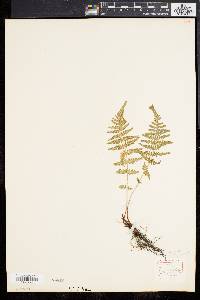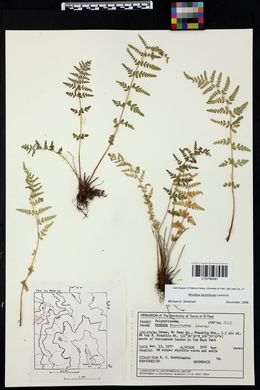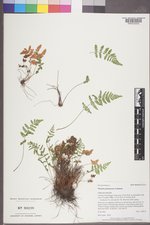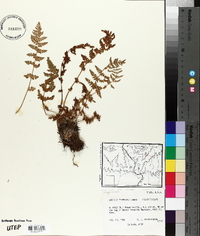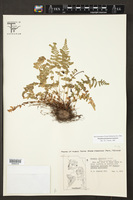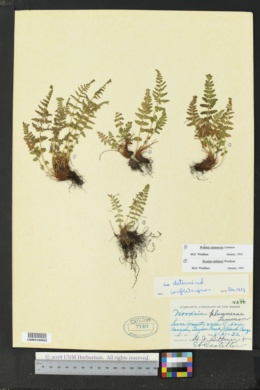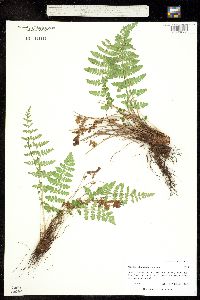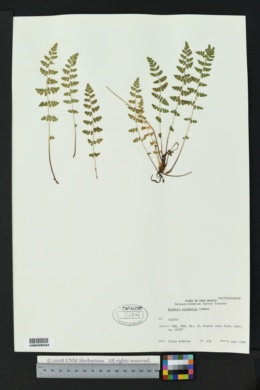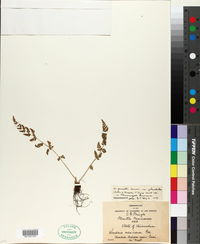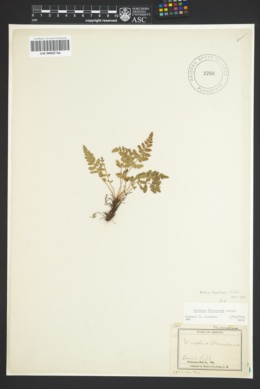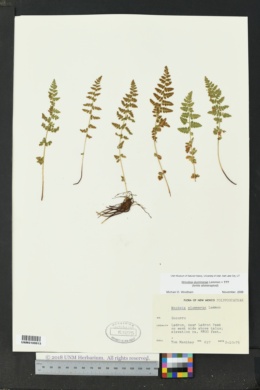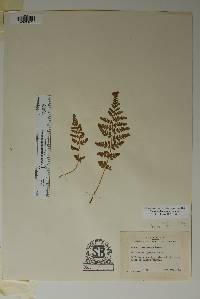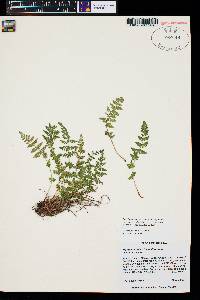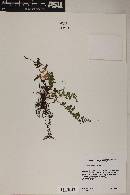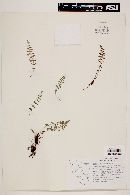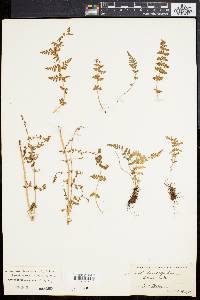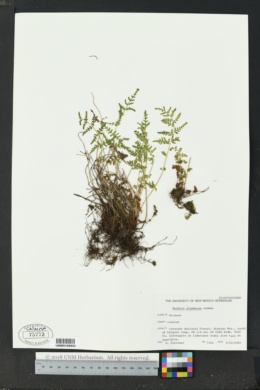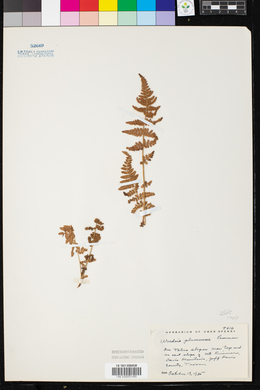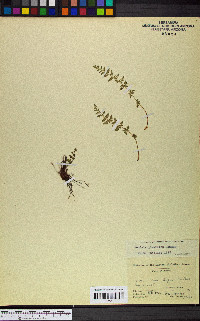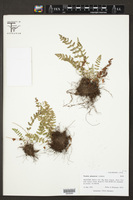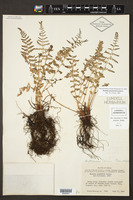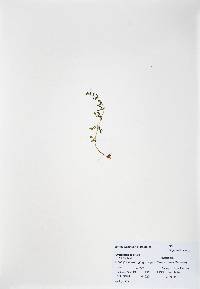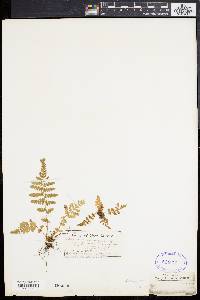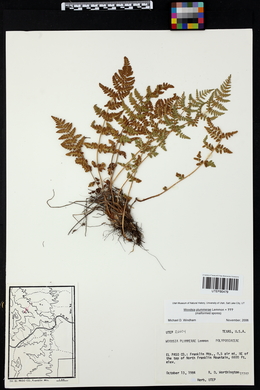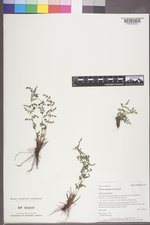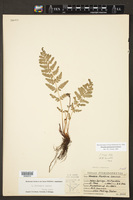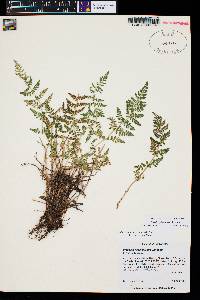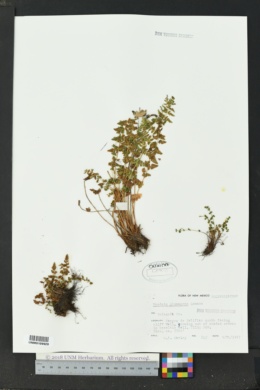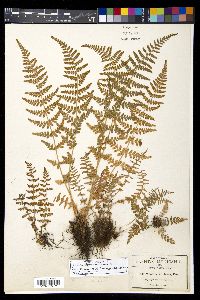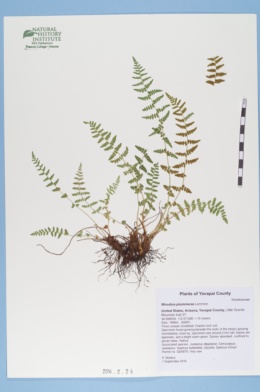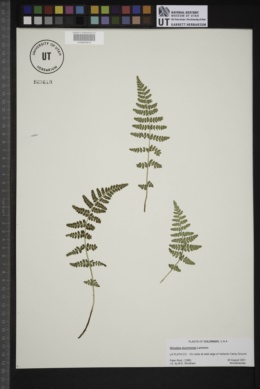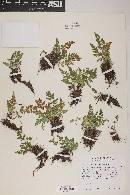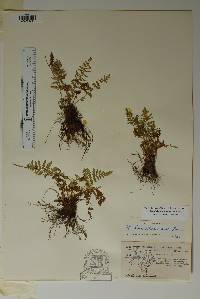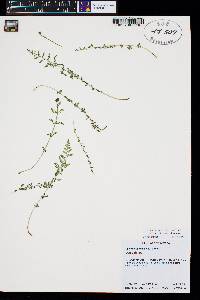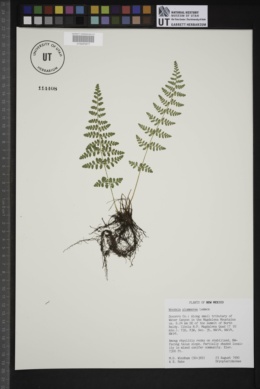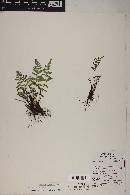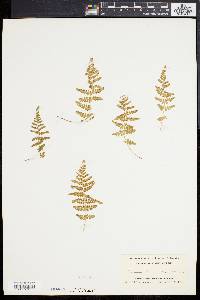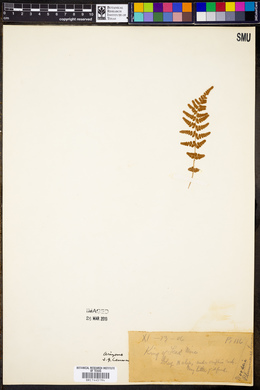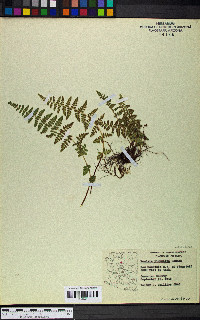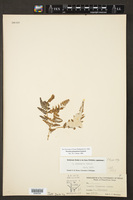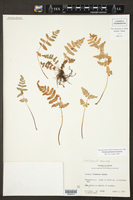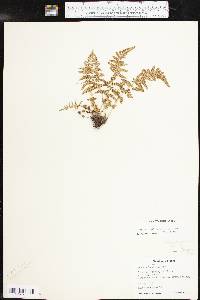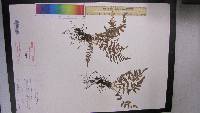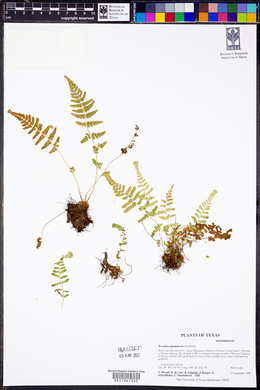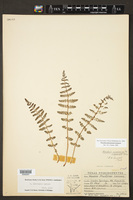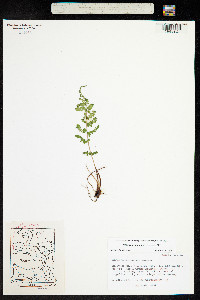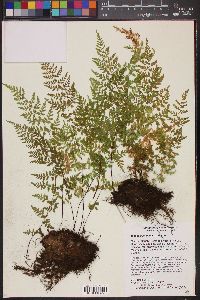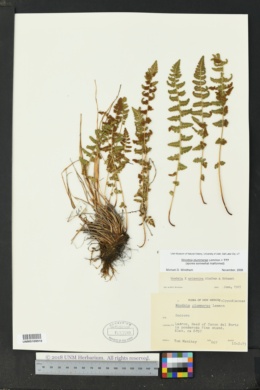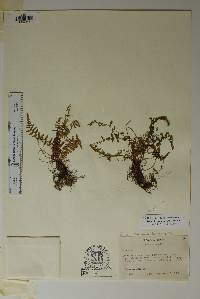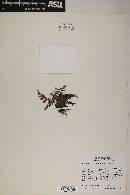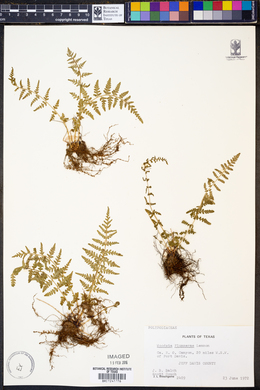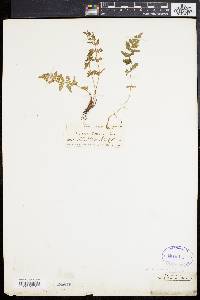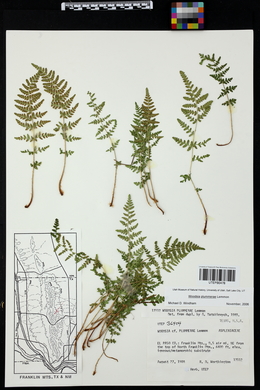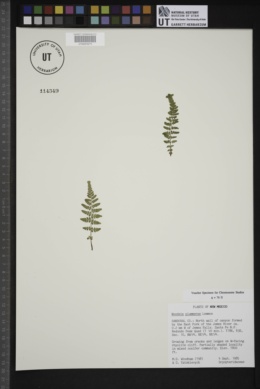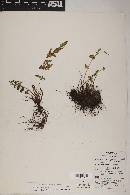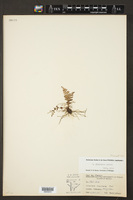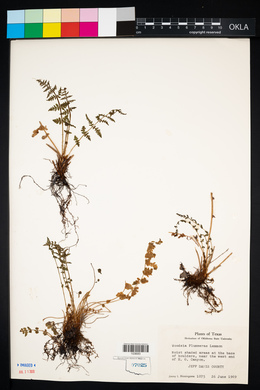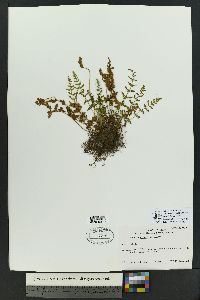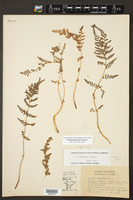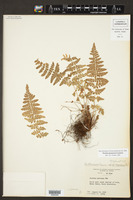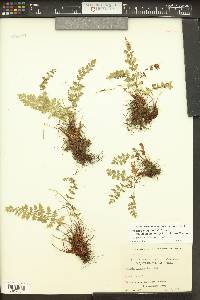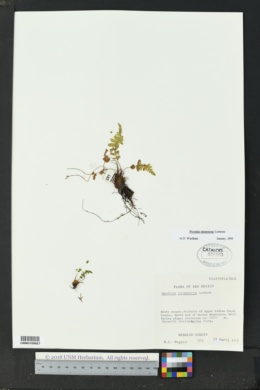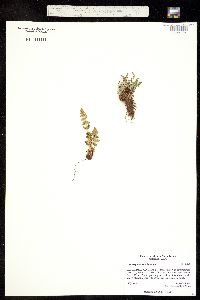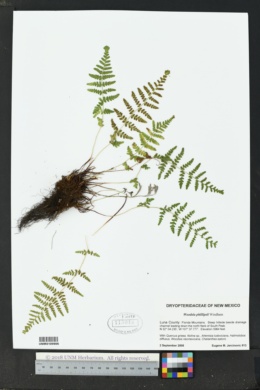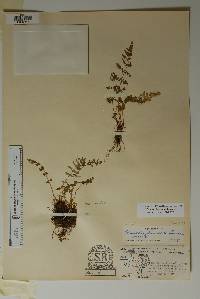Woodsia plummerae
|
|
|
|
Family: Woodsiaceae
Plummer's Cliff Fern
[Woodsia pusilla var. glandulosa T.M.C. Taylor] |
Stems compact, erect to ascending, with a few persistent petiole bases of unequal lengths; scales often uniformly brown but at least some bicolored with dark central stripe and pale brown margins, narrowly lanceolate. Leaves 5--25 × 1.5--6 cm. Petiole reddish brown to dark purple when mature, not articulate above base, somewhat pliable and resistant to shattering. Blade lanceolate to ovate, usually 2-pinnate proximally, densely glandular, often somewhat viscid; most glandular hairs with thick stalks and distinctly bulbous tips; rachis with abundant glandular hairs and a few narrow scales. Pinnae ovate-deltate to elliptic, longer than wide, abruptly tapered to a rounded or broadly acute apex, occasionally attenuate; largest pinnae with 5--11 pairs of pinnules; abaxial and adaxial surfaces glandular, lacking nonglandular hairs or scales. Pinnules dentate, often shallowly lobed; margins nonlustrous, thin, densely glandular, lacking cilia but with occasional 1--2-celled translucent projections. Vein tips slightly (if at all) enlarged, barely visible adaxially. Indusia of relatively broad segments; segments multiseriate for most of length, often divided and uniseriate distally, composed of ± isodiametric cells, often surpassing mature sporangia. Spores averaging 44--50 µm. 2 n = 152. Sporulating late spring--fall. Cliffs and rocky slopes; usually on granite or volcanic substrates; 700--3100 m; Ariz., Calif., Colo., N.Mex., Okla., Tex.; n Mexico. The origin and phylogenetic affinities of the tetraploid Woodsia plummerae have not been established with certainty. The hypothesis that it arose as a hybrid between the Mexican species W . mollis (Kaulfuss) J. Smith and W . mexicana Fée (D. F. M. Brown 1964; D. B. Lellinger 1985) seems untenable in light of recent chromosome studies indicating that the latter species is also tetraploid (M. D. Windham 1993). On the basis of sporophyte morphology and spore ornamentation, W . plummerae appears most closely related to the W . mexicana complex and W . oregana . In fact, W . oregana can be difficult to separate from W . plummerae in western New Mexico and northern Arizona. Intermediate plants occurring in this region may represent stable allotetraploids resulting from hybridization between the diploid progenitors of W . plummerae and W . oregana subsp. cathcartiana . Considering the available evidence, populations of W . plummerae in the United States probably originated through autopolyploidy from a recently discovered, but as yet unnamed, Mexican diploid of similar morphology. Woodsia plummerae occasionally hybridizes with W . phillipsii to produce sterile, morphologically intermediate triploids.
General: From compact stem, erect to ascending with few persistent petiole bases, scales uniformly brown, narrowly lanceolate. Leaves: Blade lanceolate to ovate, 5-25 cm long by 1.5-6 cm wide, minutely but conspicuously glandular often somewhat viscid; petiole reddish brown to dark purple; twice pinnate toward the base, pinnae ovate-deltate to elliptic, longer than wide, abruptly tapered to rounded or broadly acute apex; largest pinnae with 5-11 pairs of pinnules, surfaces glandular above and below; pinnules dentate, often shallowly lobed, with thin densely glandular margins lacking cilia, but with occasional translucent projections. Sporangia: Sori near the margin, indusia of broad segments, splitting into broad concave lobes which are lacerate at apex. Ecology: Found along cliffs and on rocky slopes, usually on granitic or volcanic substrates 2,000-9,000 ft (610-2743 m); sporulates late spring-fall. Notes: Difficult to distinguish from W. oregana, but if you look closely at the indusia, the lacerate apex and the broad concave lobes are useful, where in W. oregana the indusia are shorter than the sporangia and often concealed at maturity. Etymology: Woodsia is named after Joseph Woods (1776-1864) an English botanical author, while plummerae is named for Sara Allen Plummer (1836-1923) an American botanist and expert on ferns and seaweeds, who later married John Gill Lemmon. Sources: FNA 1993, Dittmer et al. 1954, Yarborough and Powell 2002, Kearney and Peebles 1969 FNA 1993, Dittmer et al. 1954, Yarborough and Powell 2002, Kearney and Peebles 1969 Common Name: Plummer's cliff fern Rarity: None General: From compact stem, erect to ascending with few persistent petiole bases, scales uniformly brown, narrowly lanceolate. Leaves: Blade lanceolate to ovate, 5-25 cm long by 1.5-6 cm wide, minutely but conspicuously glandular often somewhat viscid; petiole reddish brown to dark purple; twice pinnate toward the base, pinnae ovate-deltate to elliptic, longer than wide, abruptly tapered to rounded or broadly acute apex; largest pinnae with 5-11 pairs of pinnules, surfaces glandular above and below; pinnules dentate, often shallowly lobed, with thin densely glandular margins lacking cilia, but with occasional translucent projections. Sporangia: Sori near the margin, indusia of broad segments, splitting into broad concave lobes which are lacerate at apex. Ecology: Found along cliffs and on rocky slopes, usually on granitic or volcanic substrates 2,000-9,000 ft (610-2743 m); sporulates late spring-fall. Notes: Difficult to distinguish from W. oregana, but if you look closely at the indusia, the lacerate apex and the broad concave lobes are useful, where in W. oregana the indusia are shorter than the sporangia and often concealed at maturity. Ethnobotany: Unknown Etymology: Woodsia is named after Joseph Woods (1776-1864) an English botanical author, while plummerae is named for Sara Allen Plummer (1836-1923) an American botanist and expert on ferns and seaweeds, who later married John Gill Lemmon. Synonyms: None Editor: SBuckley, 2010 |
|
|
|

